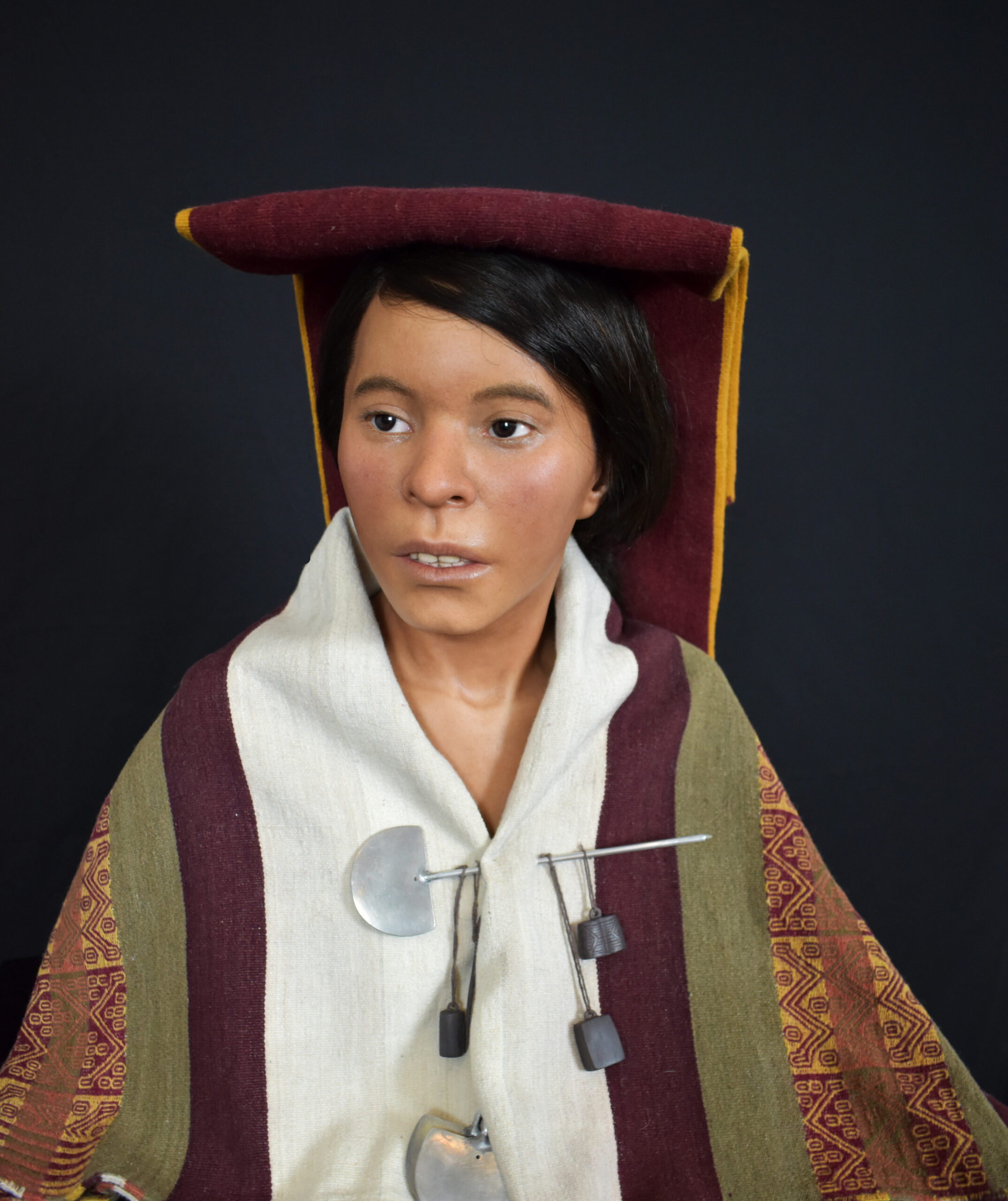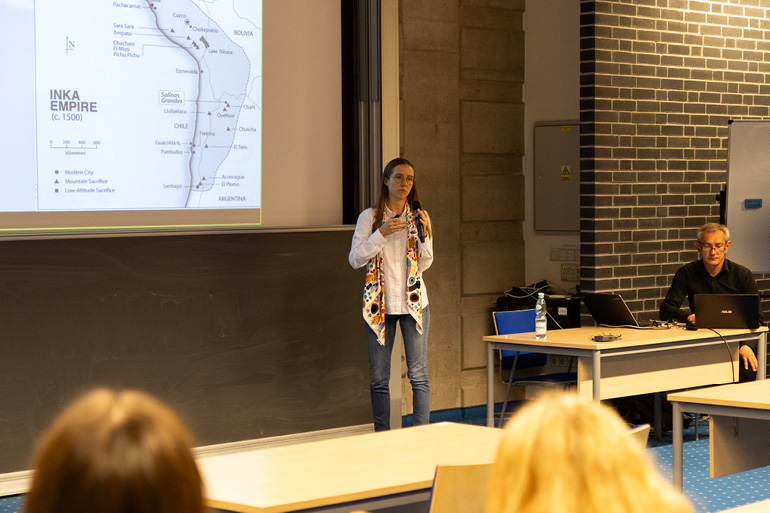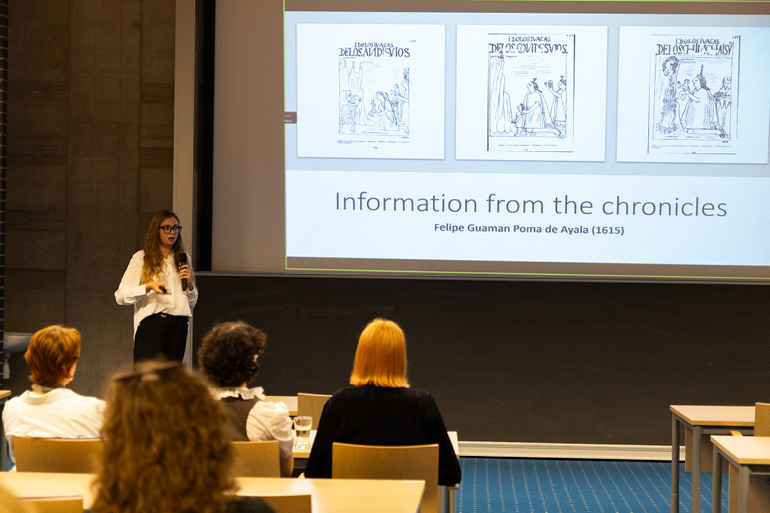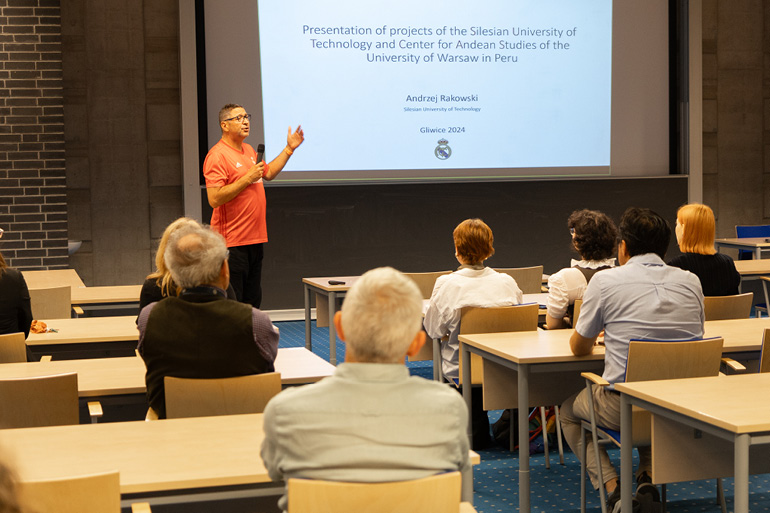Start - Aktualności - Technology helps to uncover the secrets of the Incas

Technology helps to uncover the secrets of the Incas
The results of the research of an interdisciplinary team of scientists can be seen at the exhibition “Capacocha, following the Gods of the Incas” at the Centre of New Technologies of the Silesian University of Technology. The exhibition presents, among others, photos of the world-famous mummy from Ampato, whose face has been recently reconstructed. Scientists from the Silesian University of Technology dealing with radiocarbon dating are part of the team that conducts research of the Inca period in the Andes.
Capacocha is the name of a ritual in which the Incas offered sacrifices to deities. The richest victims, whose remains are frozen mummies along with burial equipment, were discovered in the nineties on the mountain tops of southern Peru. The exhibition presents the results of the latest research of mummies, artifacts and high mountain sites carried out by a Polish-Peruvian team of scientists.
– “The exhibition is a summary of the research that we have been conducting in Peru since 2017 and is an example of how different research disciplines can be combined: - not only archaeology, but also physics, biochemical research, or, 3D modelling related to reconstruction”– explains Dr Dominika Sieczkowska-Jacyna, archaeologist associated with the University of Warsaw and recently employed at the Institute of Physics, the Scientific and Research Centre of the Silesian University of Technology. – “Archaeology is no longer just working with a brush at the site, new technologies and laboratory research are entering this field, thanks to cooperation with the Silesian University of Technology I deal with radiocarbon dating of the Inca period in the Andes” – she adds.

Dr Dominika Sieczkowska-Jacyna together with Dr Dagmara Socha from the Centre for Andean Studies at the University of Warsaw, who presented papers on radiocarbon and isotopic research of burials related to the capacocha ritual, are also co-authors of reconstruction of the face of the famous lady from Ampato. The mummy of a young girl sacrificed to the Inca gods was found by the famous American archaeologist and anthropologist Dr Johan Reinhard in 1995 on the slope of the Ampato volcano in the Andes. The researchers performed computer scans of all the mummies found, and based on them, a scan of the skull of a lady from Ampato, also called Juanita. Then Dr Socha teamed up with Oscar Nilsson, a Swedish artist and archaeologist, a prominent specialist who undertook the reconstruction of the mummy's face. The researchers took care of every detail, such as skin tone, the way of combing, or even hand-sewn textiles, which are faithful copies of those worn by a young girl who was sacrificed.

“Mummies have always ignited the imagination and enjoyed great interest. Therefore, we decided that the attempt to reconstruct Juanita’s face would be a step that would allow us to look at her not only as a museum object, but also restore her identity and perhaps allow visitors to look at the story from a different angle,” says Dr Dagmara Socha.
The end result is impressive - Juanita looks alive. Her mummy has been preserved in very good condition due to the favourable high-altitude weather conditions.
“She probably fell out of the burial site due to a nearby volcano eruption, she was just lying on the surface, we were surprised to be able to look her in the face,” said researcher Dr Johan Reinhard, who connected with the participants online. “To be honest, I thought I would never know what she looked like when she was alive, but after nearly 30 years, this was thanks to this excellent reconstruction. For years, scientists have studied her, now you can also admire her, and with the development of technology we will know even more” - added the scientist.

“Some of the victims of Inca rituals have been naturally mummified as a result of freezing and are an amazing source of data not only for us as archaeologists, but also thanks to DNA research, the study of ancient diseases, we can obtain a level of detail that is unprecedented in normal archaeological sources,” said Dr Dagmara Socha.
Knowledge of the Incas, their rituals, culture, and history, known mainly from the chronicles of the Spanish conquistadors, is developed thanks to the cooperation of researchers representing various scientific fields.
– “I try to translate into archaeological language what physicists do and vice versa” – says Dr Dominika Sieczkowska-Jacyna. “We are trying to set new paths of methodology and set ourselves increasingly ambitious challenges, complex research questions, which I hope we will successfully solve in the near future.”
Dr Sieczkowska-Jacyna together with Prof. Andrzej Rakowski from the Silesian University of Technology, who specializes in radiocarbon dating, will conduct research in Peru in the coming weeks.

– “In today’s scientific world, one cannot limit oneself to one strict discipline, such cooperation as ours is necessary” – says Prof. Dr Hab. Eng. Andrzej Rakowski, from the Institute of Physics, Centre for Science and Education at the Silesian University of Technology. – “This exhibition is also to get to know scientists from other faculties who may help in our research. We are now striving to be able to specify dates more precisely, so we are going to Peru to collect wood samples to develop a new dendrochronological curve and a calibration curve for the radiocarbon method.”
The researchers will conduct high-altitude searches on volcano peaks in southern Peru, and in the Cuzco region they will look for the roots of the Inca culture. The exhibition “Capacocha, following the Inca Gods” can be seen until June 9th at the Centre of New Technologies of the Silesian University of Technology.








